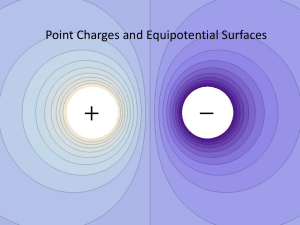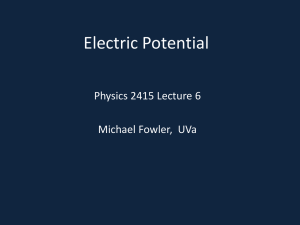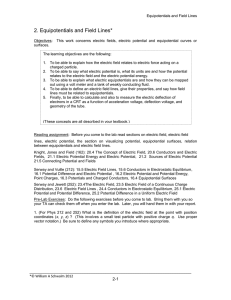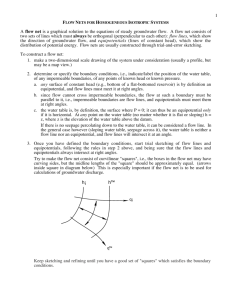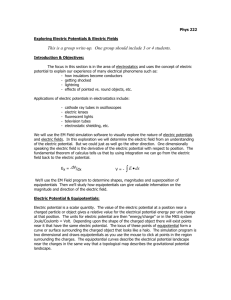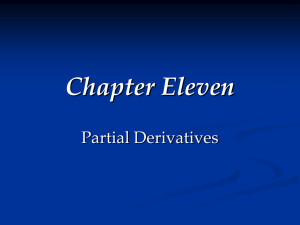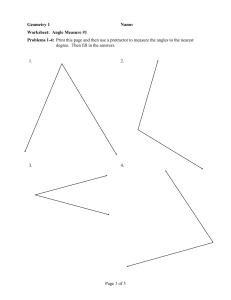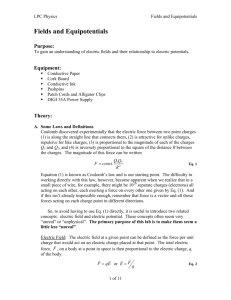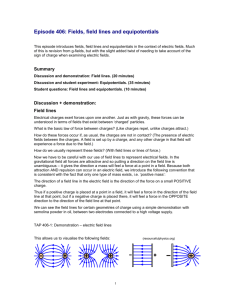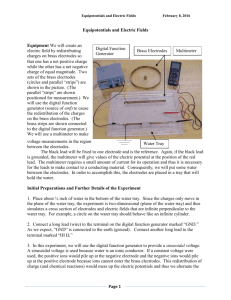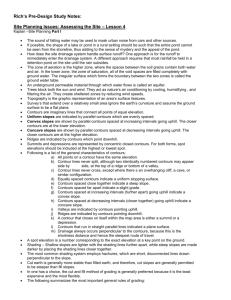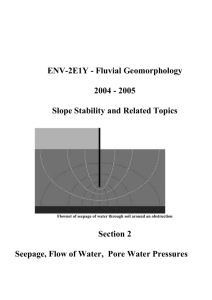Field work
advertisement
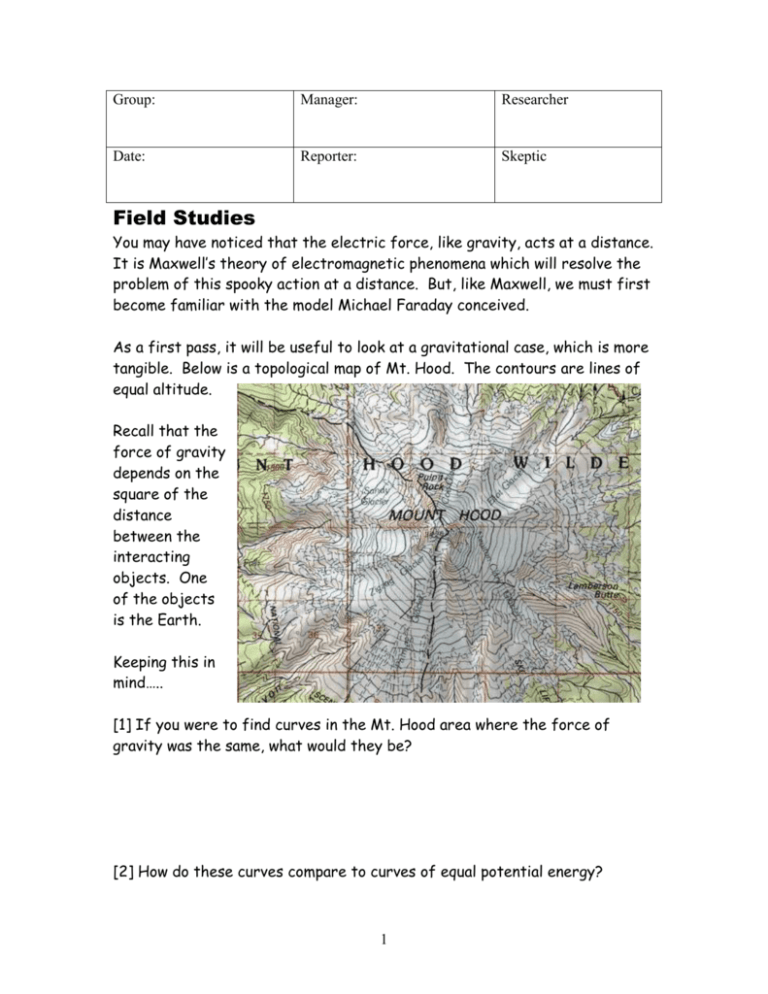
Group: Manager: Researcher Date: Reporter: Skeptic Field Studies You may have noticed that the electric force, like gravity, acts at a distance. It is Maxwell’s theory of electromagnetic phenomena which will resolve the problem of this spooky action at a distance. But, like Maxwell, we must first become familiar with the model Michael Faraday conceived. As a first pass, it will be useful to look at a gravitational case, which is more tangible. Below is a topological map of Mt. Hood. The contours are lines of equal altitude. Recall that the force of gravity depends on the square of the distance between the interacting objects. One of the objects is the Earth. Keeping this in mind….. [1] If you were to find curves in the Mt. Hood area where the force of gravity was the same, what would they be? [2] How do these curves compare to curves of equal potential energy? 1 [3] If a ball were dropped at the “n” on the Newton Clark Gulch below the HOOD on the map, what direction would it roll? How does that direction relate to the contours? [4] Now let’s simplify Mount Hood to a smooth cone. Below, draw the contours for the cone. On your sketch above, use dashed lines to show the directions balls would roll if released from various places near the top. You have just produced a map of the gravitational field on the surface of the cone. Notice how the contours intersect the path lines at right angles. This will be true of all the fields we investigate. The contours are examples of equipotentials, curves of equal potential energy. The path lines become lines of force, to which the force on a test object is tangent. These two curves intersect at right angles. 2 Suppose two equipotentials crossed. Would that be a problem? How would you interpret the crossing? Suppose two lines of force crossed. Would that be a problem? What would that say about the direction of the force at the point of intersection? Now, for that old friend, superposition. Suppose we have a single positive electric charge. What would the equipotentials for the electric field around it be? What would the lines of force look like? Now suppose we bring a second positive charge near the first, both firmly anchored and unmoving. How would you go about determining the equipotentials for the combination? Try your method another page and then draw in the lines of force, making sure they intersect the equipotentials at right angles. 3

